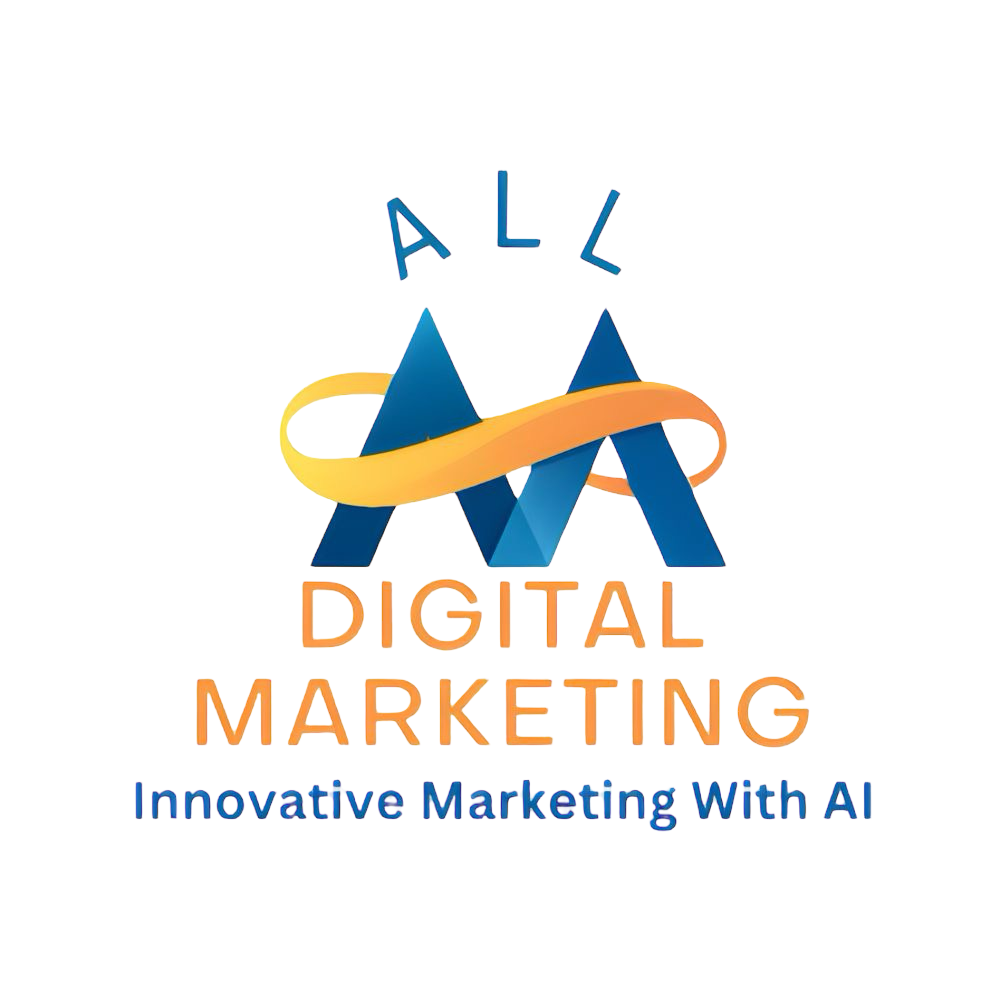Have you ever wondered why some businesses seem to explode with success while others struggle, even if they offer similar products or services? It's not magic, and it's certainly not luck. The truth is, there's a powerful secret that top businesses leverage to dominate their market, attract loyal customers, and thrive in any economy. Your competitors are likely hoping you never uncover this secret, but today, we're pulling back the curtain. Get ready to discover how smart marketing can transform your business from a quiet whisper to a booming success, inspiring your audience to say "YES!" to everything you offer.
Key Takeaways
Focus on Benefits, Not Just Features: People care about what your product or service does for them, not just what it is.
Use Emotional Triggers: Connect with your audience's hopes, dreams, and desires to make your message resonate deeply.
Create Urgency: Gently nudge your audience to take action now with limited-time offers or exclusive opportunities.
Provide Social Proof: Show real-world success stories to build trust and credibility.
Balance Information with Inspiration: Educate your audience while also motivating them to envision a better future with your help.
Optimize for Google AI: Understand what Google's AI looks for to get your content seen by more people.
Local Presence Matters: For local businesses, showing up in local searches is key to attracting nearby customers.
Consistent Brand Voice: Speak with a clear, consistent personality across all your marketing efforts.

Unlocking the Power of Your Marketing Message
Imagine for a moment that your business is a hidden gem. You know it's valuable, but how do you help others see its sparkle? That's where marketing comes in. Think of marketing as telling your story, but in a way that makes people eager to be a part of it. It's not just about selling; it's about connecting, inspiring, and helping people realize a better version of themselves with your help.
Many businesses fall into the trap of simply listing what they offer. "Our software has 50 different tools." "We provide plumbing services." While true, these statements don't spark excitement. To truly engage your audience, you need to shift your focus from features (what your product or service is) to benefits (what it does for them).
Instead of just saying, "Our software has 50 different tools," imagine saying, "Imagine cutting your workload in half and doubling your productivity!" See the difference? One is a dry fact, the other paints a picture of a better future. People don't buy drills because they need a drill; they buy drills because they need a hole. What "hole" are you helping your customers create?
Speaking to the Heart: Emotional Triggers
The most effective marketing isn't just logical; it's emotional. We make decisions based on how things make us feel. This is where emotional triggers come into play. Think about what your customers truly desire. Do they crave success? Recognition? Financial freedom? A sense of security?
Let's say you're a sales coach. Instead of just stating, "We offer sales training," try this: "Picture yourself closing deals effortlessly, becoming the top performer in your company!" This taps into the desire for success and recognition, making the potential customer envision themselves achieving their goals.
Here's another example: A financial advisor could say, "We manage investments." But what if they said, "Imagine waking up each morning with the peace of mind that your financial future is secure, allowing you to focus on what truly matters to you"? This appeals to the desire for security and freedom.
The Gentle Nudge: Creating Urgency
Sometimes, even when people know something is good for them, they need a little nudge to take action. This is where creating a sense of urgency comes in. It's not about being pushy, but about highlighting unique or limited opportunities.
Consider an online course. Instead of just "Enroll in our workshop," try: "Only 5 spots left for our transformative workshop – will one be yours?" This creates a feeling that if they don't act soon, they might miss out on something truly valuable.
Or for a local bakery: "Our fresh-baked artisanal bread is available daily." Versus: "Our special sourdough loaves are baked fresh this morning, but they sell out fast! Stop by before 2 PM to grab yours." This encourages immediate action.
Building Bridges of Trust: Social Proof
In today's world, trust is everything. People are more likely to believe what others say about you than what you say about yourself. This is the power of social proof. It's about showcasing real people who have benefited from your product or service.
Testimonials (where customers share their positive experiences) and user-generated content (like photos or videos from happy customers) are incredibly powerful.
Instead of just claiming your method works, you can say, "Join the 10,000+ professionals who have revolutionized their careers with our method!" This immediately builds credibility by showing a large, satisfied community.
"A customer named Roberto recently shared, 'I was struggling to grow my small business, but after implementing their digital marketing strategies, my sales jumped by 30% in just two months! It was truly a game-changer.'" Stories like Roberto's are far more impactful than just a list of features.
See How Digital Marketing All Can Drive More Traffic to Your Website
Brand Voice Strategy: Let our team help you create your brand voice to attract your ideal customer. This is like your business's personality – how you sound, what you say, and how you make people feel. A consistent brand voice helps people recognize and trust you.
Market Growth Opp Research: Let our team show you where you can gain additional traffic that you are missing. We look for hidden opportunities where your future customers are already searching.
Local SEO: Unlock more SEO (Search Engine Optimization) traffic. See real results. Dominate your local market. SEO is about making your website show up higher in Google searches. Local SEO specifically helps people in your area find your business when they search for things like "plumbers near me" or "best coffee shop in Biddeford."
Dominate Google: Let us get your company to the top of Google. We use smart strategies to make your business a top result when people search for what you offer.
Competitive Link Analysis: Know what your competitors are doing. We look at who links to your competitors' websites to find opportunities for your own.
Geo-Targeting: Let us find your customers in your desired location. This means showing your ads or content only to people in specific towns, cities, or neighborhoods who are most likely to become your customers.
Content Marketing: Our team creates epic content to be shared, generate links, and attract traffic. We know the secret recipe for success. This is about creating valuable blog posts, articles, videos, and more that people love to read and share.
Paid Media Advertising: Effective paid strategies with clear ROI (Return on Investment). You pay per result with us. This is about running ads on platforms like Google, Facebook, YouTube, and TikTok, where you pay when someone clicks your ad or takes a specific action. We make sure every dollar you spend brings in more.
Blogging Services: Let us create a blog that will help you rank. Blogs are a fantastic way to share useful information and naturally include keywords that Google loves, helping you show up in more searches.
Search Box Optimization: Owning a keyword in your local area is the best way to dominate your local market. Imagine when someone types "best pizza in [your town]" and your business is the first thing they see, not just in the search results, but right in the search box suggestions!
Search Price Optimization: Not only can you own the keyword in your local area and nationally, but you can control your advertising cost by getting out of the price war that exists in pay-per-click advertising and achieve a higher ROI. This is about making your ads super effective so you get more customers for less money, avoiding expensive bidding wars.
Marketing Consulting: Develop tailored strategies to grow your brand and maximize impact.
"The aim of marketing is to know and understand the customer so well the product or service fits him and sells itself." — Peter Drucker
Mastering Google's AI: Getting Found and Inspiring Action
These days just having great content isn't enough. You need to make sure Google's sophisticated AI understands your content and shows it to the right people. This means creating content that encourages your audience to say "YES!" to themselves and that Google's AI loves.
Here's how to do it:
Find the Right Questions
Think like your customers! What are they searching for? What problems are they trying to solve? Tools like AnswerThePublic or even Google's own "People Also Ask (PAA)" boxes are goldmines for understanding your audience's questions.
For example, if you're a plumber, you might see people asking, "How to fix a leaky faucet fast?" This isn't just a how-to; it's a pain point. A pet store owner might find, "What’s the best food for a new puppy?"
Pro tip: Type your main keyword (like "plumber" or "pet store") into Google and scroll down to the "People Also Ask" section. These are actual questions real people are asking, and they are perfect topics for your content.
Answer Clearly and Concisely
Google's AI loves answers that are straight to the point, especially for Featured Snippets (those quick answers you sometimes see at the very top of Google's results). Aim for answers that are around 40-60 words. Use simple words and organize your answer clearly, perhaps as a short paragraph, a list, or even a table.
Let's say the question is, "How to choose a yoga studio?" A great answer could be: "Look for certified instructors, clean facilities, and beginner-friendly classes. Always check online reviews and visit the studio in person to get a feel for the atmosphere and see if it's the right fit for you." This gives direct, actionable advice.
Optimize Your Content
Once you have your question and answer, structure your content so Google can easily understand it. Place the question as a heading (like an H2 or H3), then follow it immediately with your concise answer. Also, make sure to include your main keyword (like "yoga studio") and other related words (like "yoga classes" or "beginner yoga") naturally throughout your article.
For instance, a blog post could be titled, "Top 5 Questions About Yoga Studios Answered." Within the article, you might have a sub-heading: "## What Makes a Great Yoga Studio?" followed by your answer. This makes your content easy for both people and AI to scan and understand.
Use Structured Data
This might sound a bit technical, but it's like giving Google a special cheat sheet about your content. FAQ schema markup is a simple code you add to your website that tells Google, "Hey, this part of my page answers a specific question!" This greatly increases your chances of showing up in those valuable "People Also Ask" sections.
Imagine a dentist adding FAQ schema to a page answering, "How often should I visit the dentist?" This clear signal helps Google recognize the specific question and answer, making it more likely to appear directly in search results.
Engage with Storytelling
Don't just give dry facts. Weave a story around your answers. Stories make information memorable, relatable, and inspiring. They transform a simple "how-to" into a reason to act.
Instead of a plain answer to, "What’s the best pizza in town?" describe a family discovering your pizzeria’s secret sauce: "When Maria tasted our wood-fired pizza, she said it reminded her of her grandmother's kitchen in Italy. Our secret? Fresh, local ingredients and a passion that's baked into every slice." This makes readers crave a visit, turning information into desire.
Real-World Success Stories
Let's look at how businesses like yours have used these strategies to thrive:
Local Coffee Shop's Brew of Success: A Seattle café noticed people searching, "What’s the best coffee shop in Seattle?" They created a blog post focusing not just on their coffee, but on the unique, almost magical, roasting process they use and the story behind their passionate baristas. They also answered the question concisely for a Featured Snippet. Result? They landed a coveted Featured Snippet and saw a 15% increase in foot traffic within a month! People weren't just looking for coffee; they were looking for an experience, and this café told a story that inspired them to visit.
Fitness Coach Inspires Movement: A personal trainer realized many potential clients were searching for, "How to start a fitness routine at home?" Instead of just a list of exercises, they crafted a 50-word snippet answering the question directly and then followed it with a powerful, motivational story about a client named David, who transformed his health and confidence simply by taking the first step at home. Their site appeared in the People Also Ask section, driving an incredible 200 new sign-ups in three months! They didn't just tell David what to do; they inspired him to believe he could do it.
Plumber's Triumph Over Clogs: A local plumber understood that people often try to fix things themselves before calling a professional. They targeted, "How to unclog a drain without chemicals?" They provided a clear, step-by-step answer that was easy to understand, even for someone who had never picked up a wrench. But they also included a story about a family who almost ruined their pipes trying DIY solutions before their team stepped in with a safe, effective method. Their People Also Ask appearance led to a remarkable 25% boost in service calls, proving that helping first often leads to trust and business.
Frequently Asked Questions
Q: What is a "brand voice" and why is it important?
A: Think of your brand voice as your business's personality. Is it friendly and casual, or more formal and authoritative? It's how you talk to your customers in all your marketing, from your website to social media to emails. Keeping it consistent helps people recognize you and builds trust, making them feel like they know and understand your business.
Q: How can I tell what keywords my customers are actually using?
A: There are tools like Google Keyword Planner (it's free!) that can show you what people are searching for. You can also just type your business's topic into Google and look at the "People Also Ask" section or the "Related Searches" at the bottom of the page. These are great clues to what your potential customers are thinking.
Q: What exactly is "SEO" in simple terms?
A: SEO, or Search Engine Optimization, is like making your online content super attractive to Google. When someone searches for something related to your business, SEO helps your website or blog post show up higher in the search results. It's about using the right words, having a fast website, and making sure your content is really helpful.
Q: How can I use storytelling if my business isn't very "exciting"?
A: Every business has a story! It's not always about drama; it's about connecting with human experiences. Think about a customer's problem before they found you, their relief or joy after you helped them, or even the passion and hard work that goes into making your product or service. Even a seemingly "boring" business can have compelling stories about how it solves real problems for real people.
Your Launchpad to Content Greatness
The journey to marketing success isn't just about sharing information; it's about sparking a desire, igniting a vision, and moving your audience to act. Your content isn't just words on a page; it's a powerful tool that transforms passive readers into active participants in the narrative you've woven throughout your post. It’s your final chance to make an impact, to be the spark that helps someone say "YES" to their own potential, with your business as their guide.
We hope you enjoy reading this blog post. If you want to be our next success story, have my team do your marketing. Click here to book a call!
 Add Row
Add Row  Add
Add 








Write A Comment